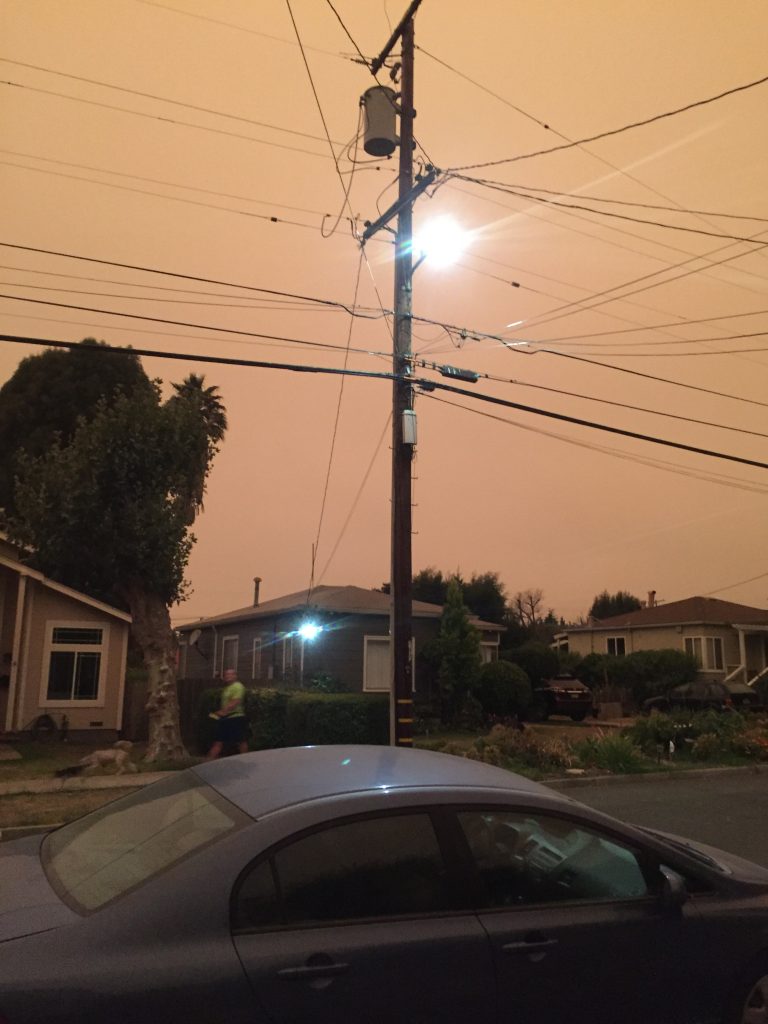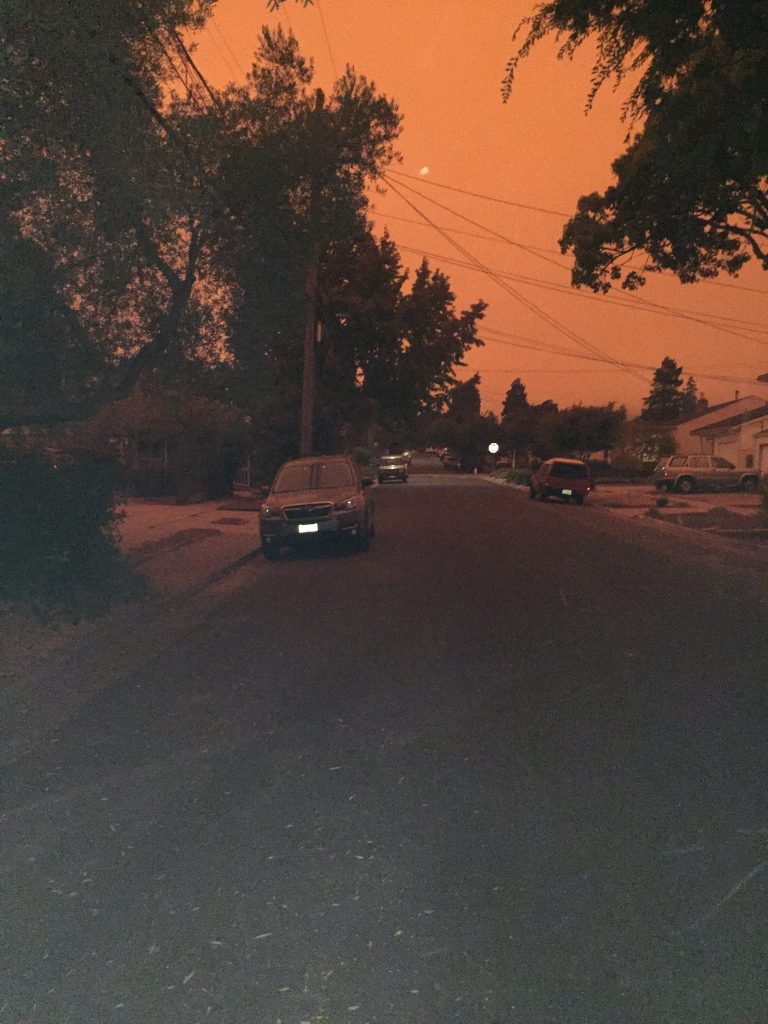

My back is to a life passed. A year, maybe more, in liminal space. Waiting. For a vaccine. For better therapeutics. For a political climate to shift. All the while, the actual climate turns against us.
The waters rise in the East. Fires rage in the West.
My back is to a life passed. Retirement, just before the pandemic. Post-retirement and lockdown, simultaneous. A turn to a writing life–solitary, self-directed, coming at a time when my options are limited. My go-to places for connection and inspiration–museums, coffeehouses, lectures, and readings–all off limits. The natural world, my cathedral, also inaccessible. The fires rage, and the air is unbreathable.
Over morning coffee, in our quiet house, the windows shut against dangerously high particulates and a darkened sky, I read an article by Julian Lucas in The New Yorker, “When a Virus Becomes a Muse.” He reviews the work of Hervé Guibert, the French writer who died from AIDS in 1991. Guibert focused on the body. His young, sexual body, with its confounding insistence. His failing body, ravaged by disease. AIDS was his muse, blasting him into a wildly creative few years, writing four books in the last three years of his life (Lucas).
How will this virus, the novel coronavirus, serve as muse? The pandemic sets limits: Where can I go? Who can I see? I live within constructs and limitations imposed much like the rules of poetic form. Within those–the sonnet, the haiku–how is language wrought? How sharp, how bright, its expression? If I cannot hug you, how do I show my devotion? In my separate state, how do I live connection? I have a new expression. Mouth and nose covered, only my eyes showing, framed by glasses I need in order to see, I punctuate exchanges at the checkout counter, and with the health-check staff at the entrance to my daughter’s physical therapy facility, by forcing my eyes into a warm, glad squint. I want them to beam. From people’s responses–the moment of recognition, the tender mirroring, the body tilting to the side, eyes crinkled, head nodding–I can tell that the beam is working. It took time to develop this new way. I learned that I have to smile with my mouth, with my whole face, even when it can’t be seen, for my feelings to show.
Life, like art, requires structure, the boundaries of form. How to structure a day? It could be embodied. Filled. Wasted. Or used. My back is to a life where hours and minutes had a particular meaning. I am no longer expected at work by a certain hour, nor to put in three hours before my morning break. The collective future, where we tossed plans, goals, places we would see–again, and for the first time!–cannot be reached over the smoothed and worn stepping-stones of, say, weeks until a holiday. The broad swaths of the day become the new metric. The slow, mounting morning. A walk, or a longer one, before getting to the bulk of the day’s writing. The noontime pivot, heat of the day rising, the birds quiet. Lunch, and a few chores. Essential errands. Medical appointments.
The downslope of afternoon, with its nagging refrain, in the time you have left…
The swirling, heated world. Greta Thunberg, 16 years old, sails from Europe to the United States to address a conference on climate change. She sails, rather than flies, so as not to add to her carbon footprint. It takes time, that voyage. She waits on deck while moving toward her future. the past recedes. The stormy Atlantic rises.
It is any clearer now that the food chain originates not in boardrooms but in hot fields, that the first essential worker drops from the back of a truck before sunup with a knife and a crate held in roughened, swollen hands?
At night, sitting on the sofa, we watch television, the police procedurals that offer entertainment. Escape and relief. The day has passed. These are the rewards for getting through another day of uncertainty, managing the anxiety of risking exposure in order to get groceries and prescriptions and to bring my daughter to physical therapy. The TV detectives we favor work in teams as they interview suspects, talk to witnesses, confer with one another as they refine their theories and move photographs and bits of evidence around on the bulletin board. Our shows always tie up nicely in the end. In my life now, without the team or the interviews or the meetings that keep the detectives connected, I pretend that I am one of them, that my notebooks and plot maps and drawings and time lines are all clues to a mystery that I will solve. Despite my enervated state, I get up, I work, I look at and handle all the materials I have acquired. The day passes. Each night a reward for getting through the day. Another day. Standing between worlds. Waiting.
REFERENCES
Lucas, Julian. “When a Virus Becomes a Muse.” The New Yorker, 14 Sept. 2000, www.newyorker.com/magazine/2020/09/21/when-a-virus-becomes-a-muse.